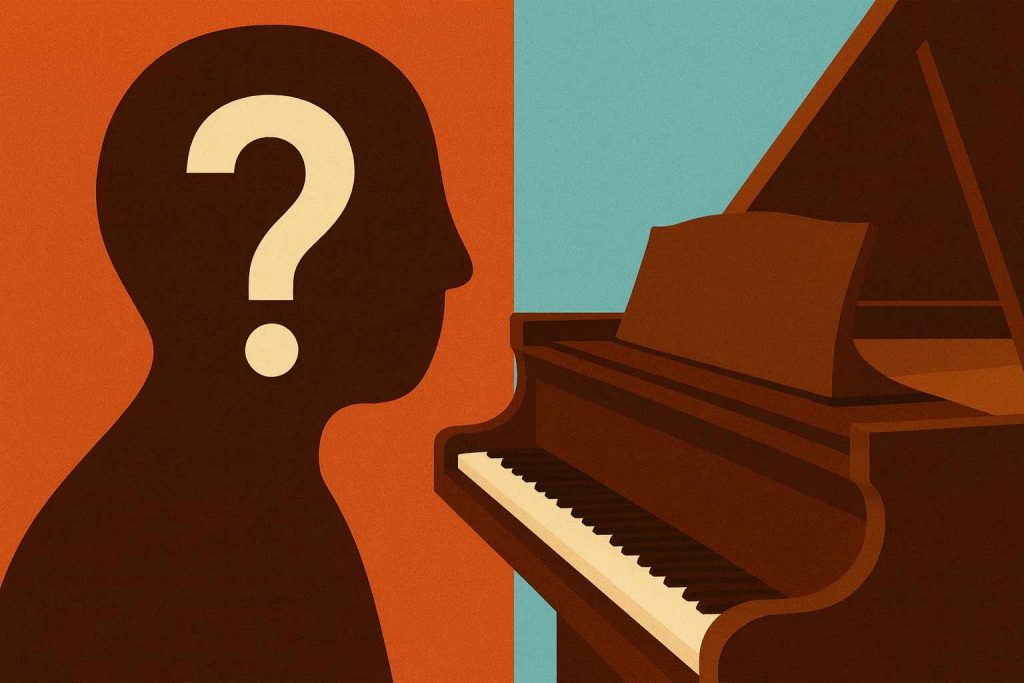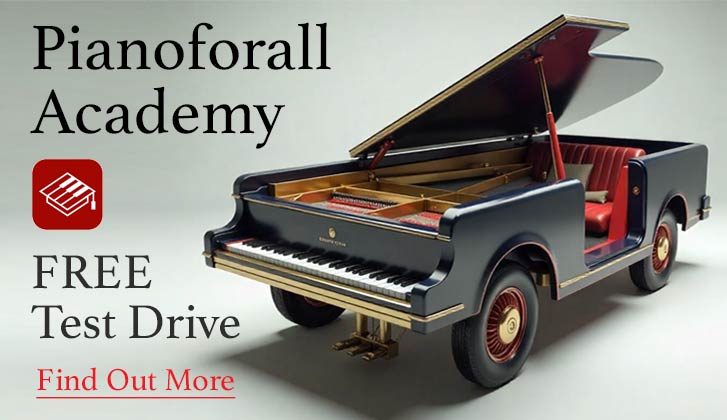For pianists who want to combine their playing with singing, the repertoire is practically endless.
Tens of thousands of songs, across a wide range of genres, were originally composed on piano — from the catchy numbers of Gilbert & Sullivan’s Savoy operettas to Billy Joel’s heartfelt ballads.
On top of that, countless other songs — written on guitar or other instruments — can be transposed and reimagined with just a little imagination at the keyboard. Add in the vast world of musical theatre, folk traditions, and jazz standards, and the pianist is never short of material.
Among these, love dominates: songs celebrating romance, lamenting heartbreak, or yearning for the unattainable. Alongside them are protest songs, anthems of identity, and — tucked in among the mix — tributes to admired figures.
Which raises the question: in the secular world of popular music…
Tributes to Leaders and Icons
You might assume the answer lies with a visionary.
Could it be Martin Luther King Jr., celebrated in Stevie Wonder’s Happy Birthday (a driving force in the campaign for MLK Day) and referenced in Paul McCartney’s Let ’Em In? Perhaps — but that gives us only two.
Or maybe a beloved musician?
When John Lennon was murdered in 1980, his peers poured out their grief: McCartney’s Here Today, Harrison’s All Those Years Ago, Dylan’s Roll On John. But that’s just three.
So who is it? Surprisingly, it isn’t a statesperson or a rock icon.
The title belongs to a woman whose life intertwined with two of the most influential songwriters of the 20th century: Pattie Boyd.
From Beautician to Beatle’s Muse
In 1961, seventeen‑year‑old Pattie Boyd was a trainee beautician at Elizabeth Arden’s Bond Street salon in London. A client suggested she try modelling.
She took the advice — and soon appeared in the glossy pages of Vogue, Vanity Fair, Honey, and the colour supplements of Sunday newspapers.
Her career was already thriving when she was cast in a television advert for crisps. The director, Richard Lester, later gave her a minor role in A Hard Day’s Night, The Beatles’ first feature film.
Her part was tiny — a schoolgirl with a single line — but it caught the eye of George Harrison.
George Harrison: The Quiet Beatle in Love
George asked Pattie out almost immediately. At first, she refused — she was already in a relationship. But that ended quickly, and when George asked again, she accepted.
They began dating, and in 1966 they married. Together they explored fashion, art, and spirituality, even travelling to India to immerse themselves in Eastern philosophy and music — influences that shaped George’s later work.
Boyd was not only his wife but also his muse. She inspired several of his best‑loved songs:
- Something — hailed by Frank Sinatra as “the greatest love song ever written.”
- If I Needed Someone — a jangly 1965 love song.
- I Need You — written for the Help! soundtrack.
- For You Blue — Harrison’s 1970 tribute, with Lennon on lap steel guitar.
Enter Eric Clapton
As George and Pattie’s marriage faltered in the 1970s, another giant of rock entered the picture. Eric Clapton — a close friend of George’s — fell passionately in love with Pattie. His feelings poured directly into his music.
- Layla (1970) — the fiery centrepiece of Derek and the Dominos’ Layla and Other Assorted Love Songs, a plea for Pattie’s love, complete with its legendary piano coda.
- Bell Bottom Blues — another song of longing.
- Wonderful Tonight — written in 1977 as Clapton waited for Pattie to get ready for a party.
In 1977 Pattie and George divorced. Two years later, she married Clapton. That marriage also ended in 1989 — but by then, Pattie Boyd had inspired a catalogue of songs unmatched by any other figure.
Why Pattie Boyd?
Why Boyd, rather than a statesman or icon? Partly it was timing. She loved and was loved by two songwriters at the height of their powers. But more than that, she represented the spirit of the 1960s: stylish, modern, intelligent, adventurous.
To Harrison and Clapton, she wasn’t just a partner — she was a symbol. When the relationships soured, she became a figure of longing and regret.
Songs and the Piano
For pianists, the songs Boyd inspired are not just gossip‑soaked curiosities. They are living repertoire.
Harrison’s Something, with its tender chord progressions, translates beautifully to solo piano. Clapton’s Wonderful Tonight becomes especially poignant when re‑imagined at the keyboard. Even Layla, originally guitar‑driven, finds new voice on piano — especially in its famous coda.
This is the magic of the piano: the power to reinterpret, to give songs new life in a fresh key. Boyd’s story is about inspiration, but also about how music travels and transforms — especially through the piano.
A Life Beyond the Songs
It’s easy to see Boyd only as a muse, but her own story deserves recognition. She built a career as a model, later became a photographer, and published memoirs offering her side of life with two rock legends.
Her place in cultural history is not passive but active: a woman navigating fame, creativity, and personal upheaval in her own right.
Piano Alchemy
So, who has inspired the most popular songs? Not a world leader, not a religious figure, not even another musician.
The answer is Pattie Boyd — model, photographer, and muse of both George Harrison and Eric Clapton.
Her story shows the strange alchemy between life and art, and how inspiration flows in unexpected directions. For pianists, it’s a reminder that behind every great love song is not just a melody to be played, but a story to be told — one that, in this case, always circles back to the piano.



